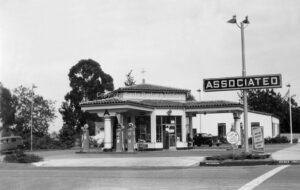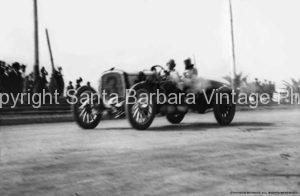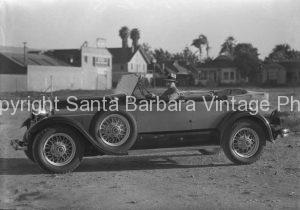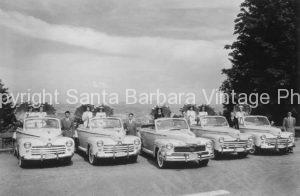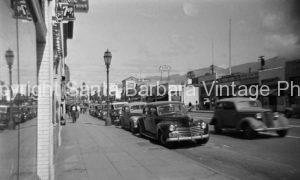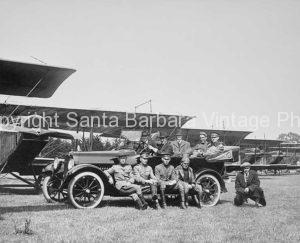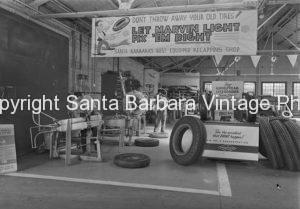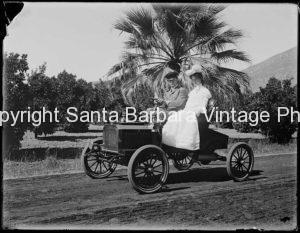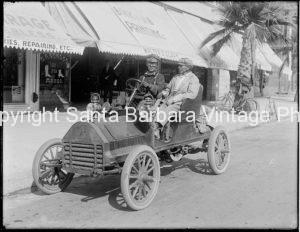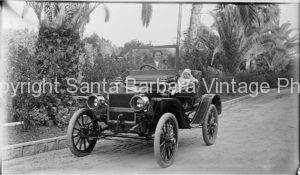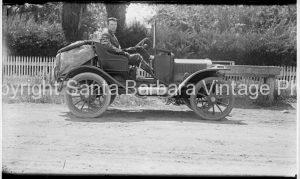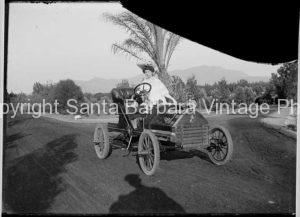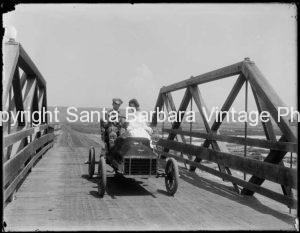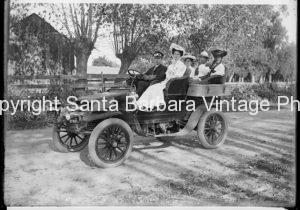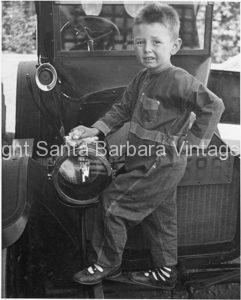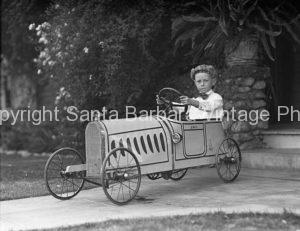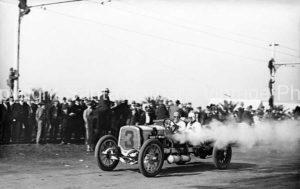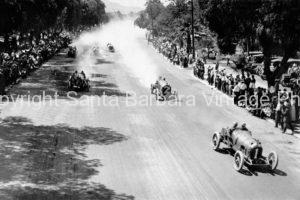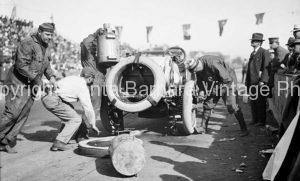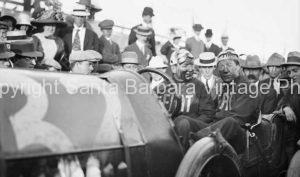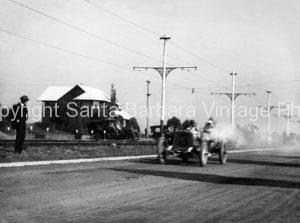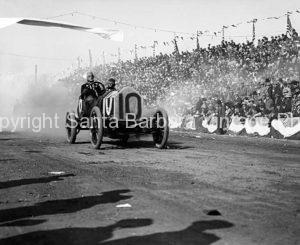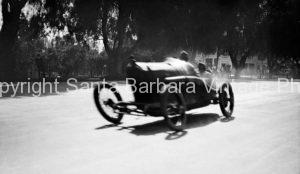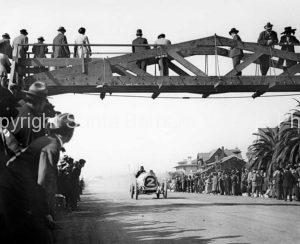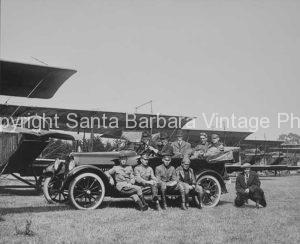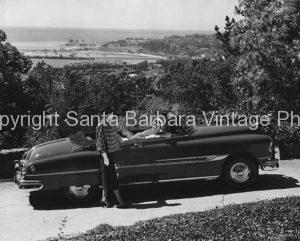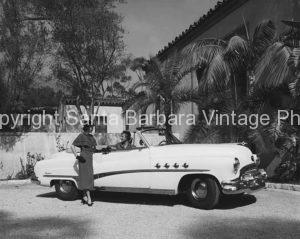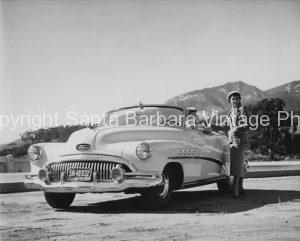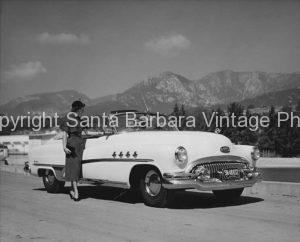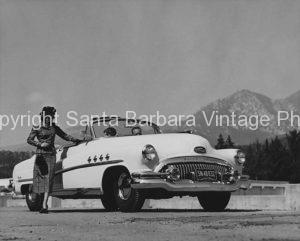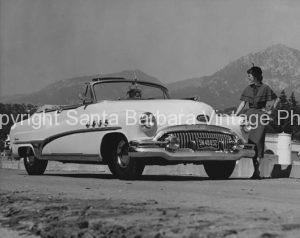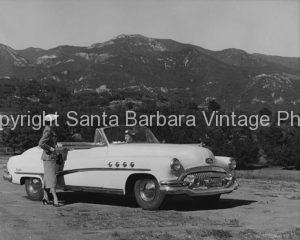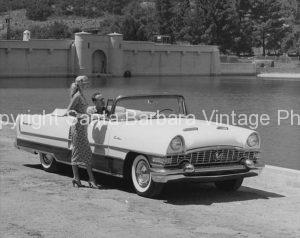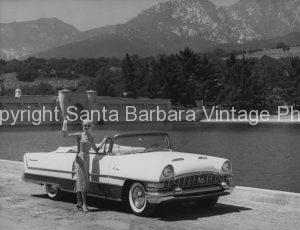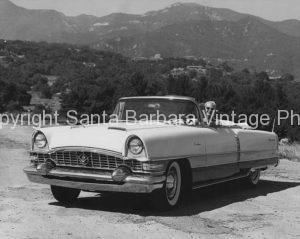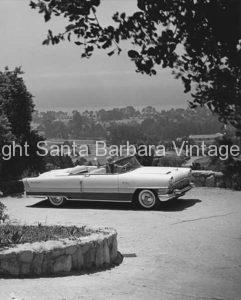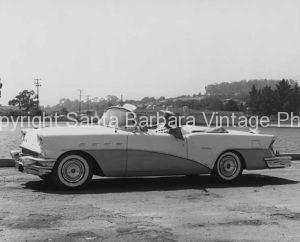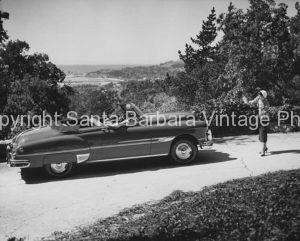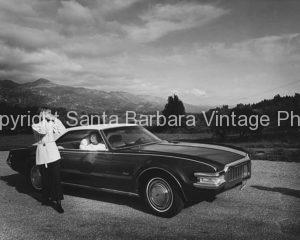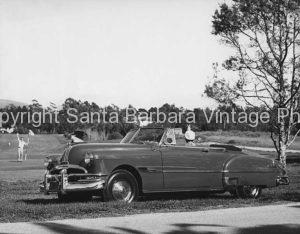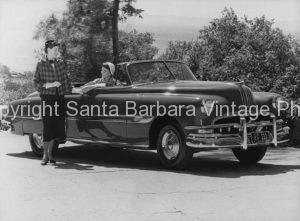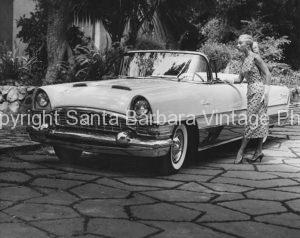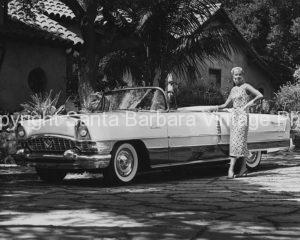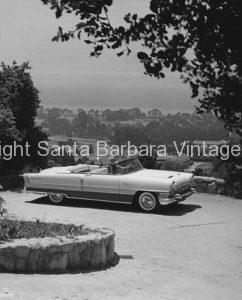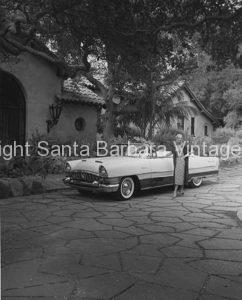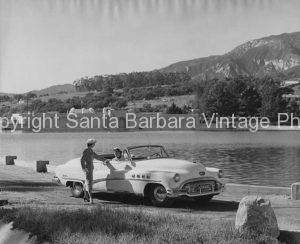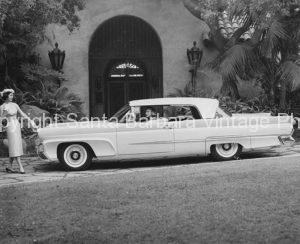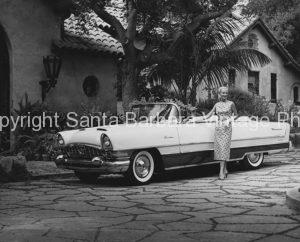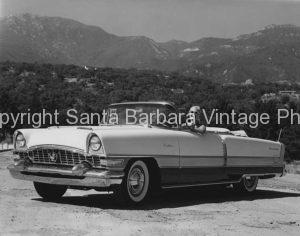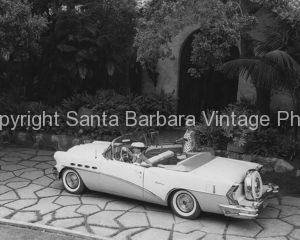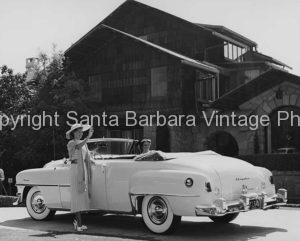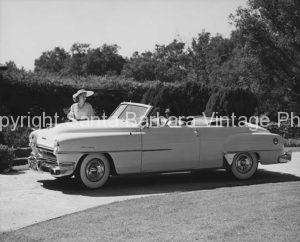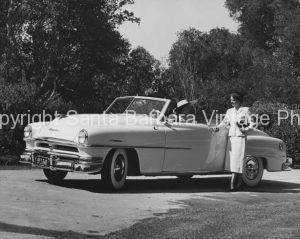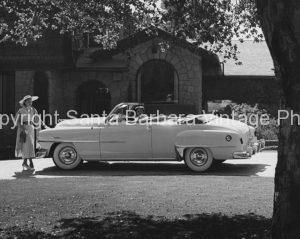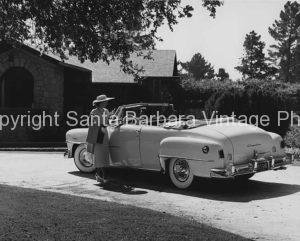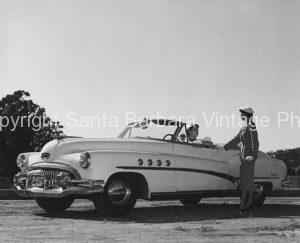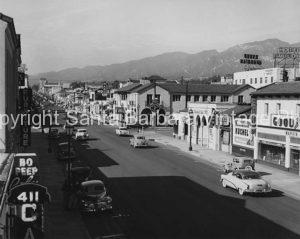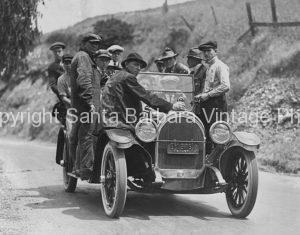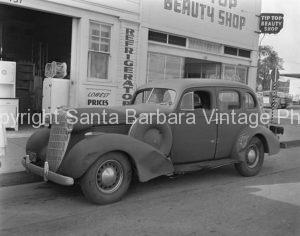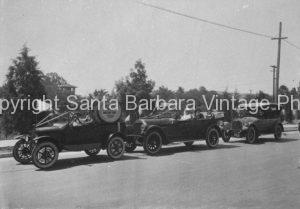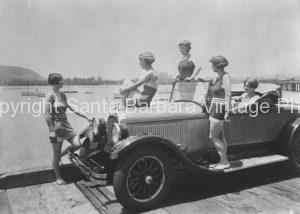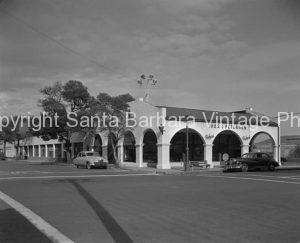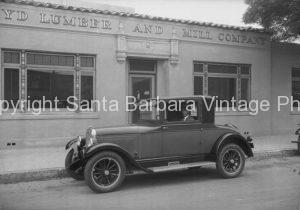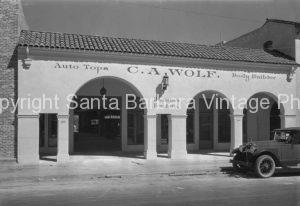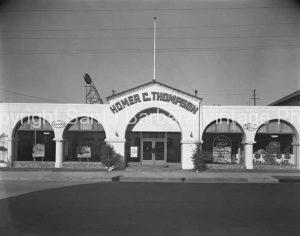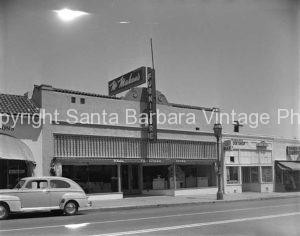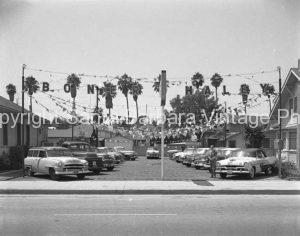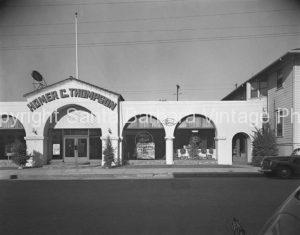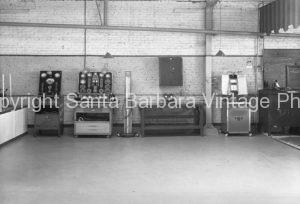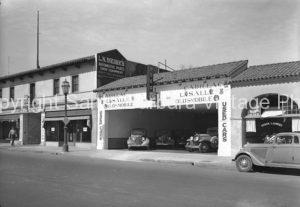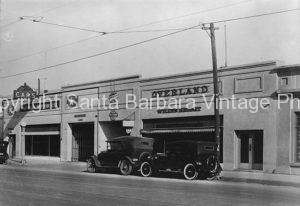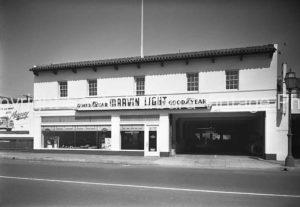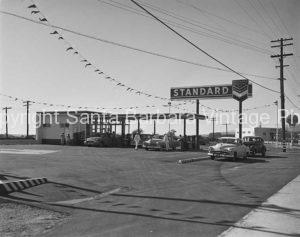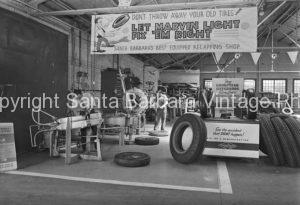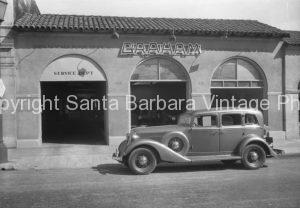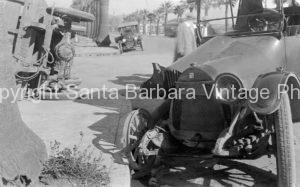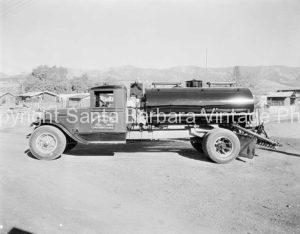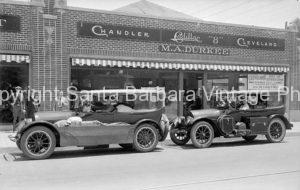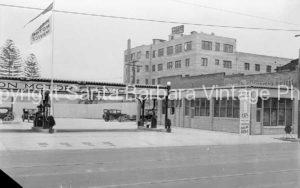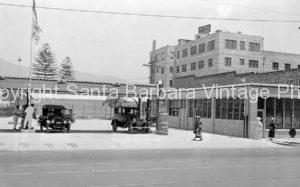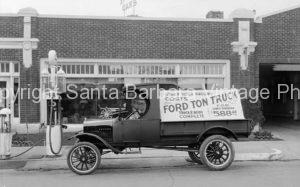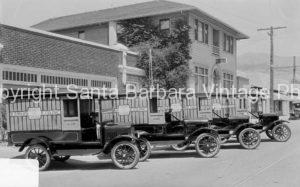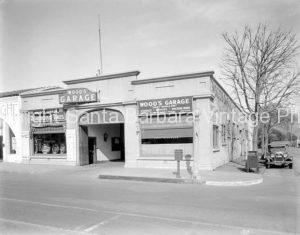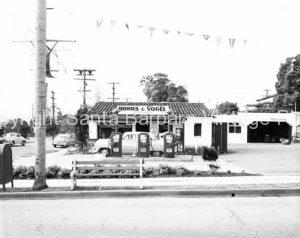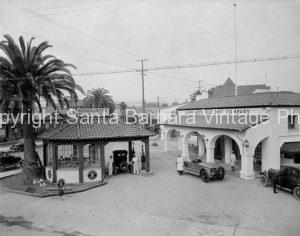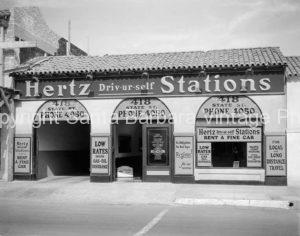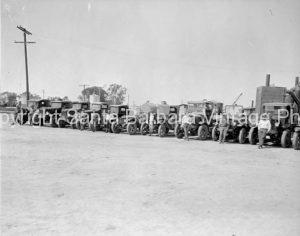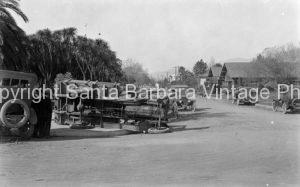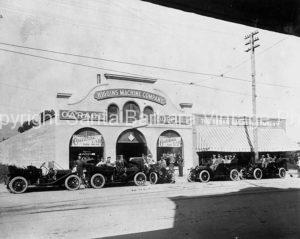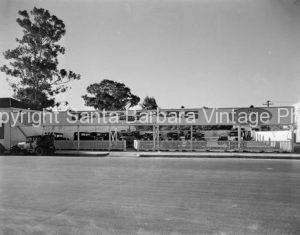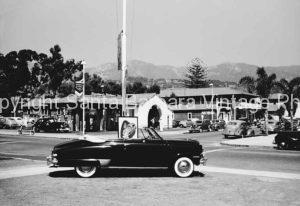Contact Us
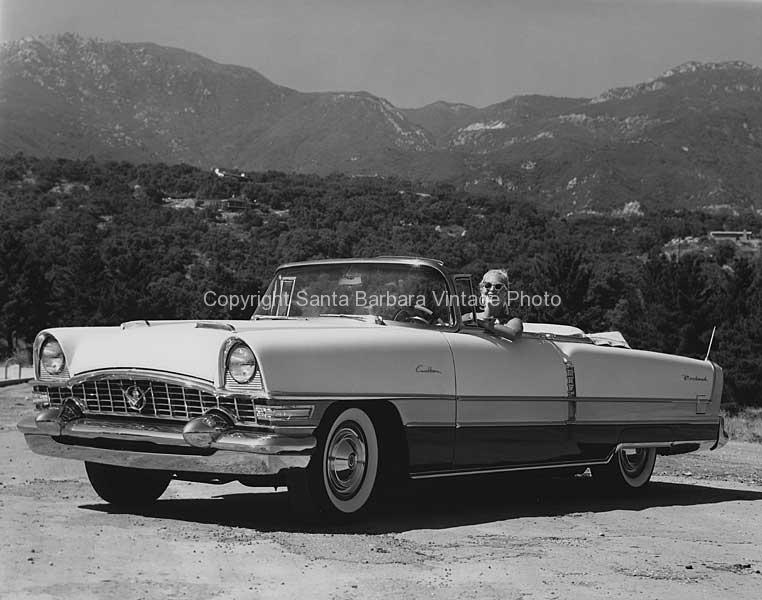
Some History of Auto Racing in Santa Barbara
Santa Barbara has a long history of auto racing. Check out this great story about the 1953 Santa Barbara Road Race in the American Riviera Magazine.
The air was already hot by 9:00am and despite an ocean breeze rolling in off of Shark’s Cove, sweat was beading on the foreheads of the local kids who had ridden their bikes to the promontory on Summerland hill. A group of them sat there, leaning over their handlebars, eyes fixed with anticipation on Highway 101 just below. In addition to the Porsches, MGs and other more prevalent races, they’d heard that there’d be a Ferrari coming through. No one knew quite how many-the rumors varied-but there’d be at least one. And there’d be a Kurtis 500S, the fastest car in America at that time. They’d never seen a Ferrari in real life, let alone a custom built Kurtis. They waited with bated breath, and they weren’t to be disappointed, because soon a procession of sports cars would come charging up the hill, one after the other, British and German, Italian and American, with all sorts of thrilling engine tones and cutting edge designs.
It was the inaugural weekend of the Santa Barbara Road Races, a series of sixteen races over two days across a range of vehicle classes. Held on a 2.2 miles, nine turn course carved out of the tarmac and service roads running around the Santa Barbara Municipal Airport, the race was sponsored by the city’s Junior Chamber of Commerce and put on by race promoter George Cary and the fledgling California Sports Car Club. It was one of only a handful of races held in California at that time and with an incredible 135 entrants, it seemed like every sports car enthusiast across the state was descending on Santa Barbara for Labor Day weekend in 1953.
The races were the talk of the town, with competitors parading down Cabrillo Boulevard and revelers (both local and those drawn by the event) crowding the city’s bars and restaurants. Santa Barbara’s wealthy and famous held lavish parties at their Montecito estates, with a Concours d’Elegance to follow the races at the Santa Barbara Biltmore. On Sunday morning, people packed State Street to watch the main competitors rumble out towards the airport, where an animated crowd of more than 15,000 greeted them. The overwhelming favorite in the 35-lap main event was Bill Stroppe from Los Angeles, running the aforementioned custom built Kurtis 500S powered by a massive Mercury flathead V-8 engine. Built by famed Indy car builder Frank Kurtis, the car had provided Stroppe incredible success in an August race in Seattle and it was widely speculated that he would run away with the checkered flag. And that’s certainly how it looked form the get-go, with Stroppe jumping out to a 30 second lead by the sixth lap. Running second was an up-and comer from Santa Monica named Phil Hill. He was pushing his Ferrari 250 Mille Miglia as hard as he could, but his 2.9 liter overhead cam engine was no match for the pure raging power of Stroppe’s Mercury. And neither were Stroppe’s tires.
In a tight part of the course, Stroppe lost control and struggled in vain to keep the car from sliding. To his horror, the Kurtis skittered into a ditch off the left side of the course, leaving its nose pointing up at the brilliant blue September sky above. As spectators hustled to help Stroppe extricate his bashed up steed, the staccato scream of Hill’s V-12 Ferrari announced the first lead change of the day as he barreled by. By the time he had the car back on the course the accident had cost Stroppe more than a minute, causing him to rejoin the race in eighth place. But Phil Hill certainly wasn’t out of the woods; stopwatch math predicted the Kurtis would catch Hill by the checkered flag.
In the ensuing laps, Stroppe punished his flathead, pushing hard and consecutively besting his (and every other driver’s) lap times for seven laps straight. After 21, he’d retaken second, charging up to within forty yards of the Ferrari on the straightaway into lap 25. A shot at victory was so close Stroppe could smell it in the gasoline fumes and burnt rubber. But coming fast into turn one and continuing to gain ground, luck failed him again. The Kurtis, with its tires slicked by Stroppe’s blazing pace, began to skitter and spin, and although Stroppe was able to keep the car on the course, the engine stalled. He got the Mercury fired again and peeled out, holding on to second place, but by the time he saw the finish line, Phill Hill was crossing it to the checkered flag and the cheers of the crowd. Building on the popularity and success of the inaugural Labor Day race in 1953, a second event was added annually in 1955 over the Memorial Day weekend and the event only grew from there. The Santa Barbara Road Races soon became the “it” events of the Southern California holiday weekends, drawing increasingly larger crowds and increasing larger names…
